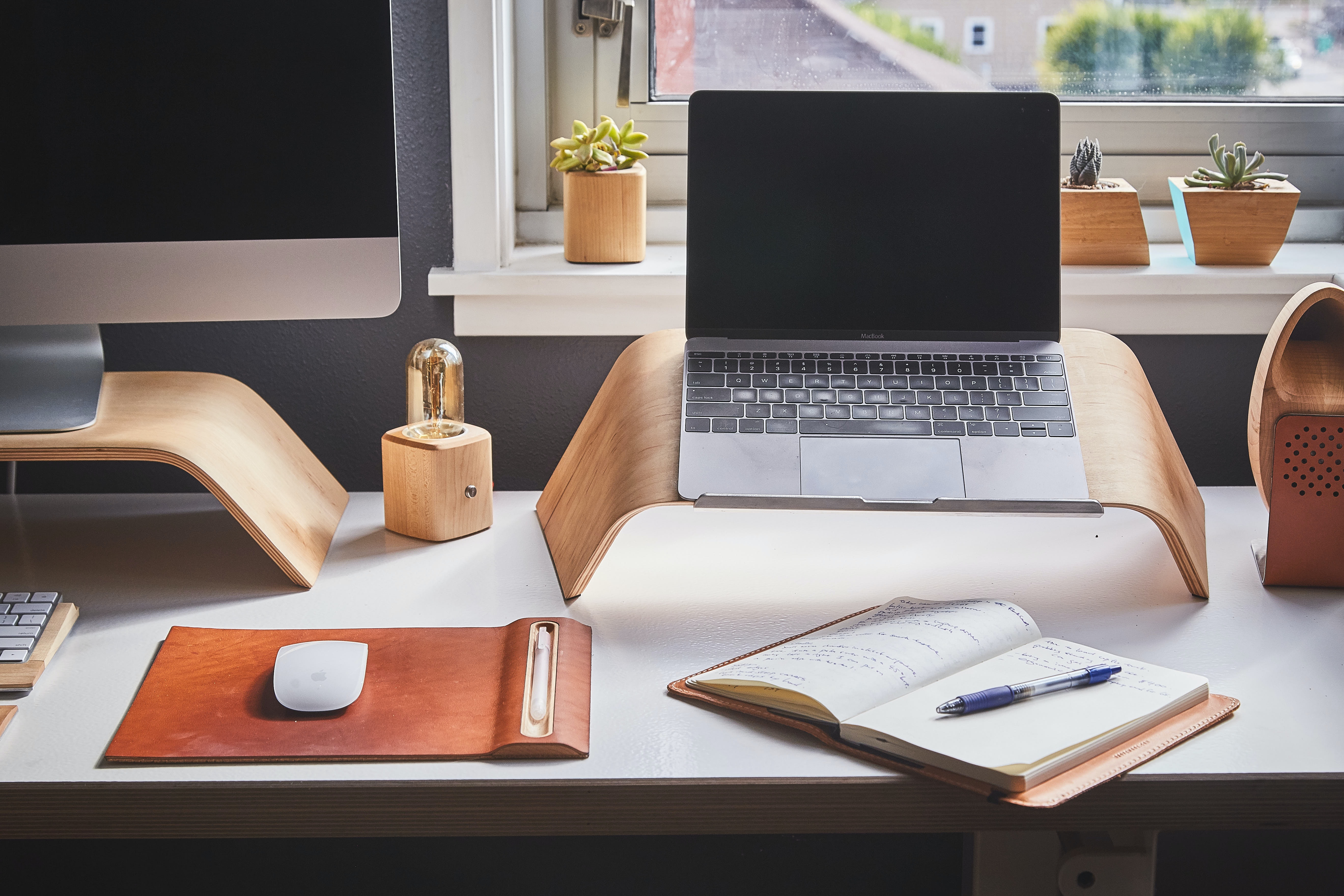The importance of a good home working space is often overlooked. On average, a third of our day is spent at work and a well set up workspace is key to keeping comfortable and productive during this time.
Not only can a poorly set up workspace be uncomfortable and make it more difficult to focus on work, it can also potentially have longer term effects on both posture and health.
The tips below offer some guidance on setting up an ergonomic workstation:
Monitor Position– A monitor that is too low or close can contribute to neck and eye strain. Adjust your monitor so that it sits at eye level and is between 20 – 40 inches (50 – 100 centimetres) from your face can help prevent this. If the depth of your desk doesn’t allow this, you can try moving your monitor to a corner, requesting a flat screen monitor (if applicable), or purchase an attachable computer tray to create a deeper working surface.
If you are working from a laptop, achieving the optimum position for both your eyes and hands can be more difficult. try propping it up to eye level for reading based tasks then lowering it down for typing so that your arms are at a 90-degree angle.
Screen– Adjust the brightness and contrast of your monitor so that you can see clearly and without unnecessary strain. If you need the text larger to see, learn how to adjust the font and zoom in and out, without decreasing the resolution.
Make sure that the room you are working in is well let and your monitor is positioned so that there is no glare on the screen when you are facing it directly. You can improvise a monitor hood from cardboard, to see how one will work.
Seating–Dining tables and chairs are a great place to work at from home, however they are often a different height to office furniture. Dining tables usually run slightly higher than desks, and chairs lower than the standard office chairs, so try using pillows to provide support and adjust your height.
Ideally, keep your feet flat on the floor to improve posture.
Move– Don’t forget that you don’t need to be glued to your desk all day. If you need to stretch to reach items, it means it is time to get off your chair and walk to get the item. Take regular breaks to stretch or walk about and refresh your mind. Try your best to add some movement into your day to day tasks such as taking calls on your feet to get some steps in. If you find yourself forgetting to move, set an alarm to remind you.
Don’t wait until you begin to have problems before making these ergonomic adjustments. It can be much more difficult to recover from an injury than to prevent it, so your best bet would be to make these changes as soon as possible!
Remember, ergonomics is about what works for you. Be on the lookout for ways to improve, and if you find an activity awkward or a position uncomfortable, continue to adjust the activity, the workspace, or both.




